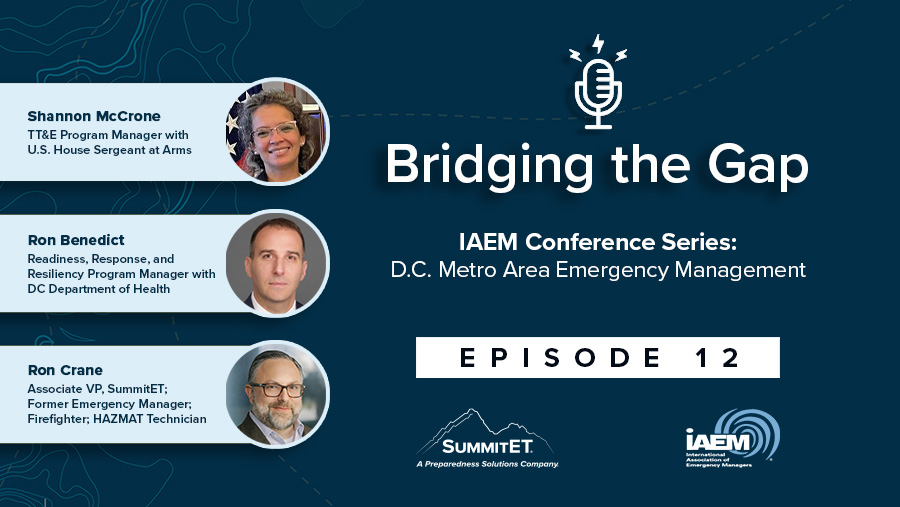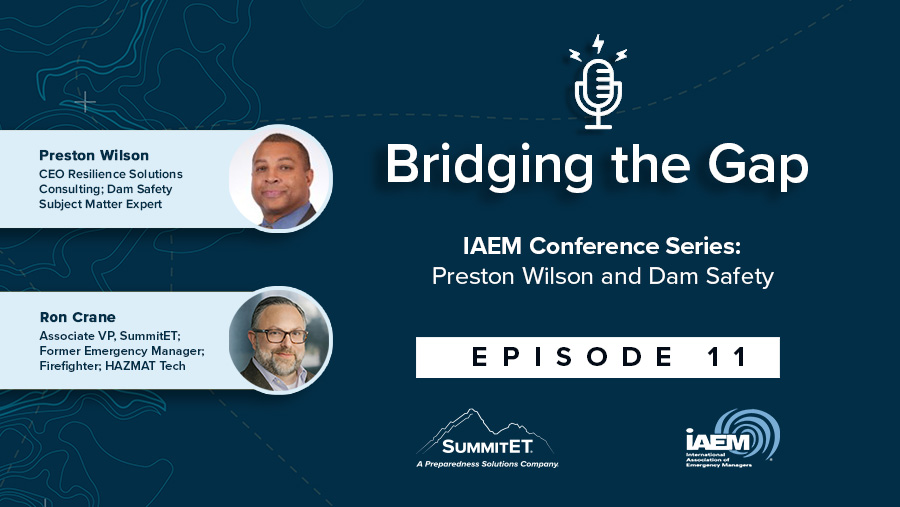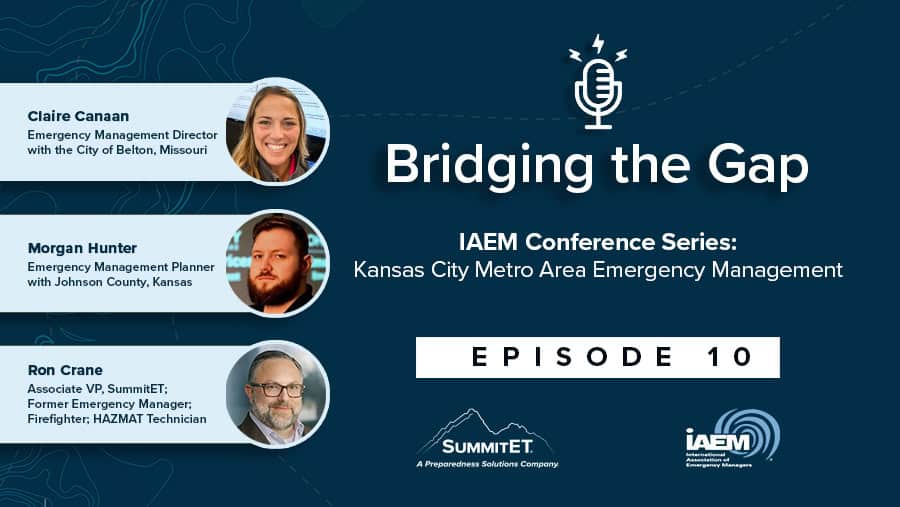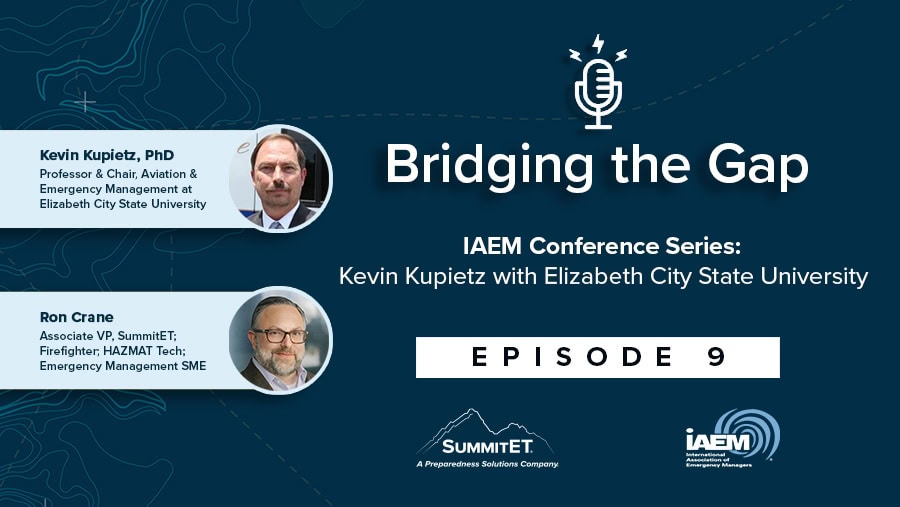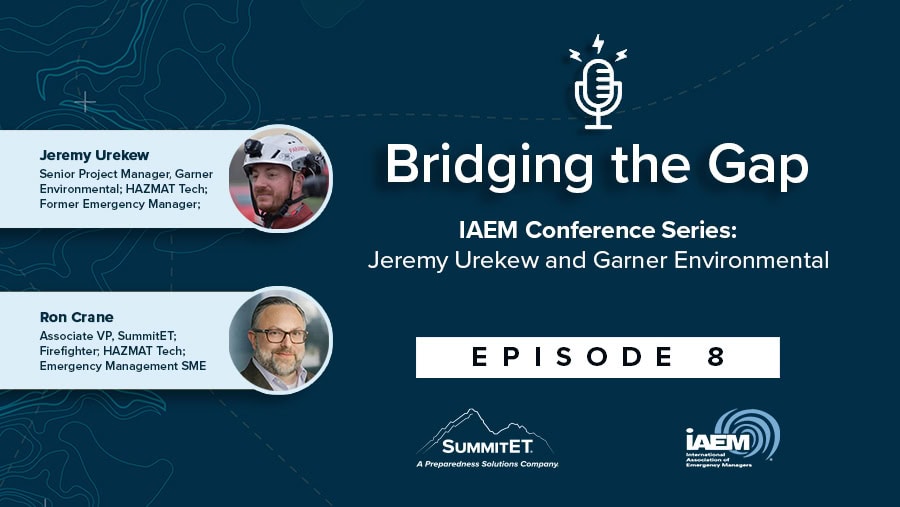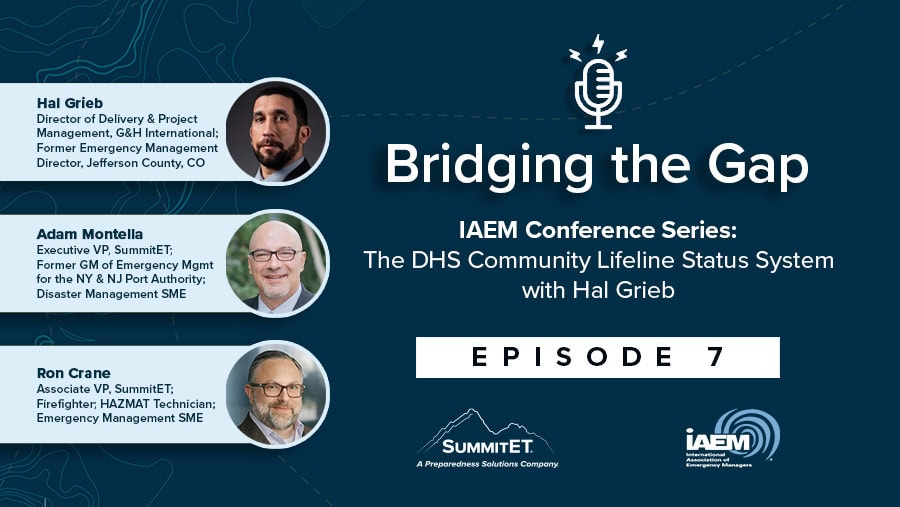Adam Montella of SummitET speaks with Kenn Honig, seasoned emergency management professional at the 2024 International Association of Emergency Managers (IAEM) Conference.
In this special IAEM Conference Series episode of Bridging the Gap, SummitET host Adam Montella is joined by Kenn Honig, a seasoned emergency management consultant with a long career in law enforcement and emergency management at the Port Authority of New York and New Jersey. Join this insightful discussion as they navigate the evolution of emergency management practices, the technological advancements over the decades, and the undeniable importance of personal contacts in the field.
Reflecting on Historical Challenges
Kenn’s journey in emergency management is deeply rooted in some of America’s most significant tragedies, notably the first World Trade Center attack in 1993 and the events of 9-11. As a sergeant assigned to the Port Authority Police Academy during the 1993 attack, Honig was thrust into the heart of crisis management, making quick decisions with limited technology. The attack revealed substantial deficits in emergency response technology, particularly in communication and coordination among various command posts.
The Role of Technology
One of the key points Honig emphasizes is the transformation of technology from the early 1990s to today. In 1993, pagers and basic communication tools were the norm, often leading to miscommunication and delays. By 9-11, while technology had evolved, it still faced significant limitations. The collapse of the World Trade Center towers highlighted the vulnerability of communication systems. Honig recounts how the Nextel Direct Connect was among the few communication tools that functioned effectively amidst the chaos.
Embracing Simplicity and Redundancy
Despite technological leaps, Honig underscores the necessity of simple, reliable, and redundant systems. His experiences taught him that during crises, advanced technology could fail, and having basic, foolproof methods as backups is crucial. For instance, during the aftermath of 9-11, Honig relied on personal contacts and straightforward solutions like “sneaker nets” to relay messages when technology faltered.
Building a Robust Emergency Toolkit
Honig advocates for an emergency toolkit that includes not just advanced technology but also essential items like pad and paper, chargers for various devices, and access codes for vital systems. He stresses the importance of having these tools readily available and familiar to all users to ensure seamless operation during emergencies. Try this PIO go bag.
Networking and Continuous Learning
For aspiring emergency managers, Honig’s advice is clear: build a robust network of contacts. Attending conferences, joining professional groups like the International Association of Emergency Managers, and continually engaging with peers across sectors are vital steps. These relationships can prove invaluable during crises, enabling swift coordination and resource mobilization.
Final Thoughts
Kenn Honig’s extensive career and experiences offer profound insights into the evolution of emergency management. His emphasis on the balance between leveraging technology and maintaining essential, simple methods and the power of personal connections provides a comprehensive guide for both seasoned and new emergency managers. As the field continues to evolve, these principles will remain foundational in managing and mitigating future crises effectively.
Join us next time on Bridging the Gap as we continue to explore the critical aspects of emergency management, featuring experts who share their knowledge and experiences to help us all navigate the complexities of the vital field.
Meet the Experts Featured in This Podcast

Kenn Honig
President of Critical Incident Management & Training; Former Sr Mgr for Public Safety with the Port Authority of NY/NJ

Adam Montella
Executive VP, SummitET; Former GM of Emergency Mgmt for the Port Authority of NY/NJ; Disaster Management SME
Visit our Terms & Conditions

